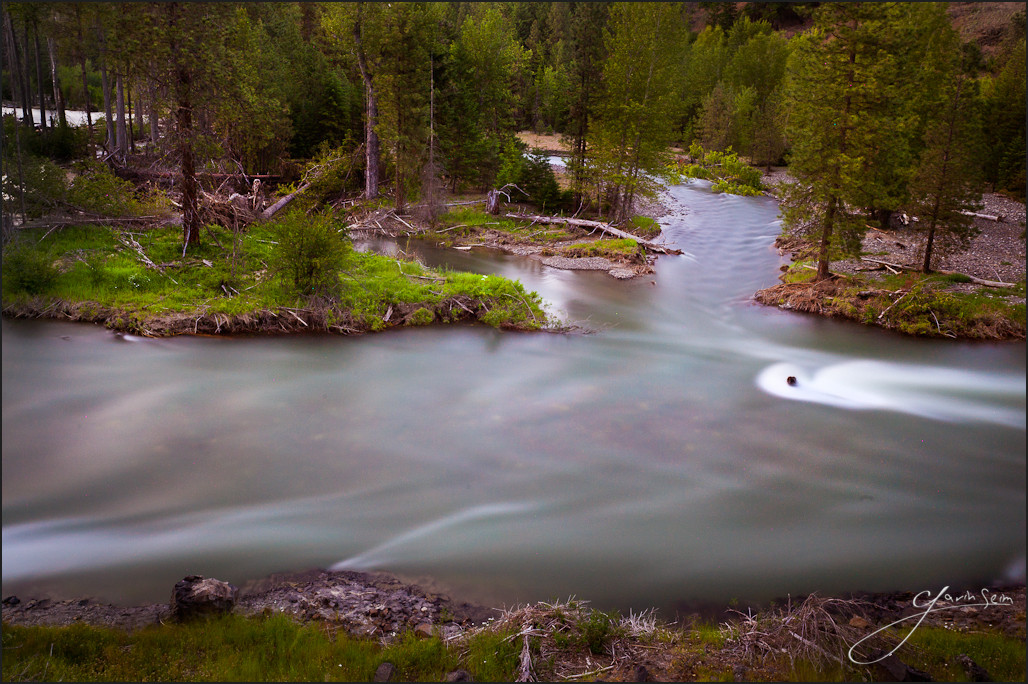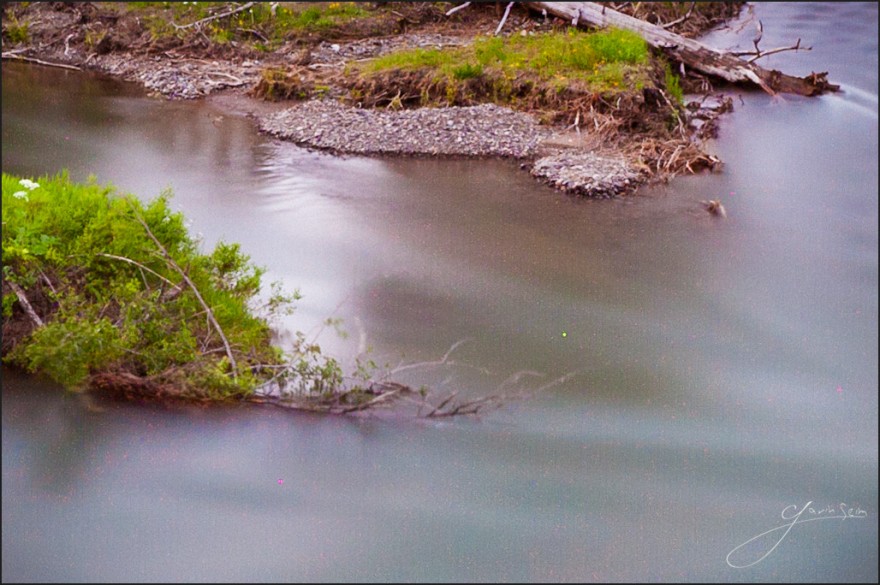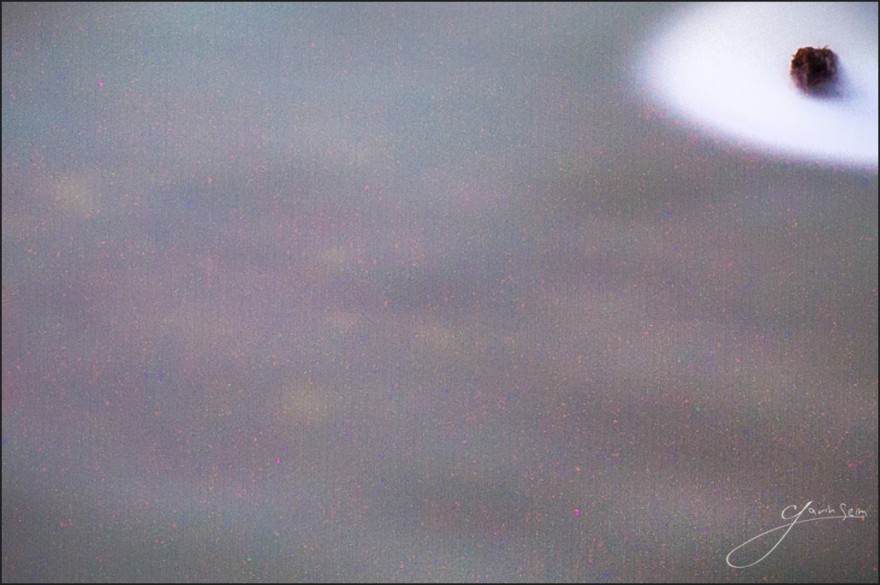
This is for you photographers. It’s an 8 minute exposure I did just after sunset on the river. I processed it with the Velvius preset from Power Workflow3. It’s not a stunning image and that’s not why I posted it. I felt it was a good image to use to talk a bit about pixel science.
To me, what merits discussion is the noise. I’ve done images much longer than 8 minutes. The longer the exposure, the more potential for noise to be generated as the sensor heats up. But, as myself and some others have found, the warmer the environment, the worse it seems to get. It was probably in the low 70’s here in the mountains, and the warmer temperature seemed to make a great deal of difference compared to images I’ve done in cooler environments.
Look at the image and the crop section I posted below. The noise produces a banding-like effect on the frame that really reduces quality. The large color artifacts are easy enough to fix, but there’s an almost patterned, under-the-surface noise that really is a challenge. And this was with in camera long exposure reduction turned ON.
I talked about this type of noise in depth in the making of 140 Minutes of Night ( 2+ hour long exposure) and looked at techniques to deal with it, but it’s not easy to correct. When you get into bad heat noise, the plethora of noise plugins and tools we have won’t just take it away. Well, they will, but only at the cost of losing a lot of detail everywhere else. And that’s just not acceptable. It’s a real issue. But since most people don’t do ultra long exposures, it’s probably not top priority for manufacturers to solve. Bear in mind, though; a “long” exposure” is relative. It seems the warmer the outside temperature is, the more noise, so this can affect shorter exposures as well. It’s interesting that I could make a 2 hour exposure at 50 degrees and an 8 min exposure at 70 degrees and both would have nearly equal noise and artifacts. It seems the sensor reacts very strongly to temperature, though I’m still trying to determine if other factors might be involved.
Film is a viable alternative as it has no sensor noise, although the Reciprocity failure has to be addressed and the exposure compensated for because the film becomes less sensitive as the exposure lengthens. Still, I think I can deal with that, and,while I’ll keep working with ways to manage digital noise, I’ll have film in my repertoire as well.
I do plan to look for ways to drastically cool the sensor while the exposure is being made, but without moving it. A fan could cause it to shake, so I need something more stable. This could reduce long exposure noise by a huge factor. In the meantime, there are ways to work with it, but, beyond what automated NR tools can do, it’s a slow process.
Bottom line. I plan to talk about this more as I experiment, and I welcome input from your experiences. For now, I suggest we keep in mind that everything is cause and effect (see Six Keys to image Quality). We should consider the limits of our sensors and act accordingly. Again, you may want to read the notes on 140 Minutes of Night. The heat noise was bad in that frame, and I worked for a long time to get it as clean as possible, finding some useful tricks… Gav



this makes me start to think. It makes sense if the sensor heats up, there is a greater chance to create noise in an image. I think we all know this. If we can create some sorta of metal box/ heat sink to cover the camera, then use ‘can of air’ upside down to cool the box, we can get the camera temps down. Im thinking of going to a metal fabrication place (my old work) building a box with a ‘spray port’ that way it can direct the spray outside the box, and not fog up the lens by getting to cold. Do you guys think its worth the trouble to get that edge on digital noise? I think every little bit counts!
Sadly most people don’t know it at all. There’s not enough education of there dealing with image quality. But I absolutely think it’s worth it Wes. Though it needs to be simple. Problem I have with a metal box is that is might limit access to controls, but if it could be made viable it could be good. Thing is whatever cooling system we use it has to not effect camera shake and I think that’s going to be an issue. We’re still in the beginnings of digital, so there’s lots of work to be done. If you come up with something that seems viable please share.
The effect of heat on sensors is fairly well known in certain types of photography. Astrophotographers use all sorts of cooling techniques for their cameras for the often very long exposures. The amount of black in their images probably makes noise an even more important issue. An astrophotography forum or website is probably a good place to start looking for tips.
Well said, Gavin. This is definitely an issue, and again, you’re correct in that most folk aren’t aware of this issue. I’d hazard a guess that greater than 75% of digital photographers aren’t aware of the problem. I’ve seen myriad things used to cool down cameras, even the long “bean bag sock” type icepack thingies to use for neck pain. Straight from the freezer, wrapped in paper towels and in a plastic newspaper sleeve – draped over the SLR and a remote shutter release. Necessity is the mother of invention. :O)